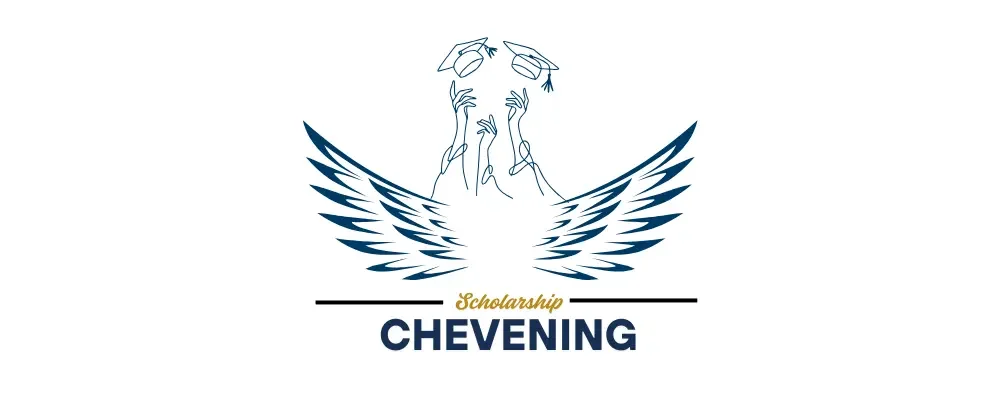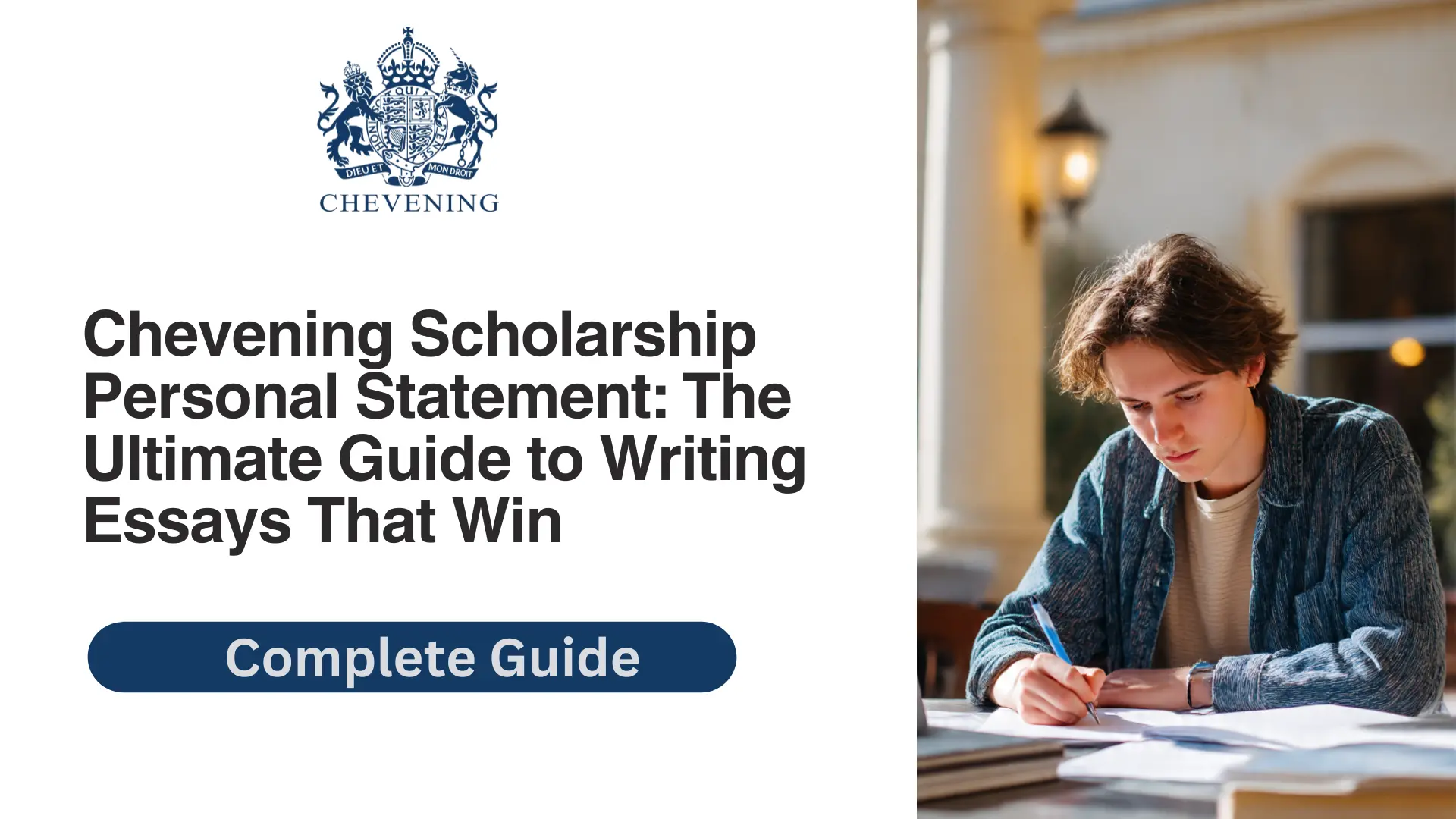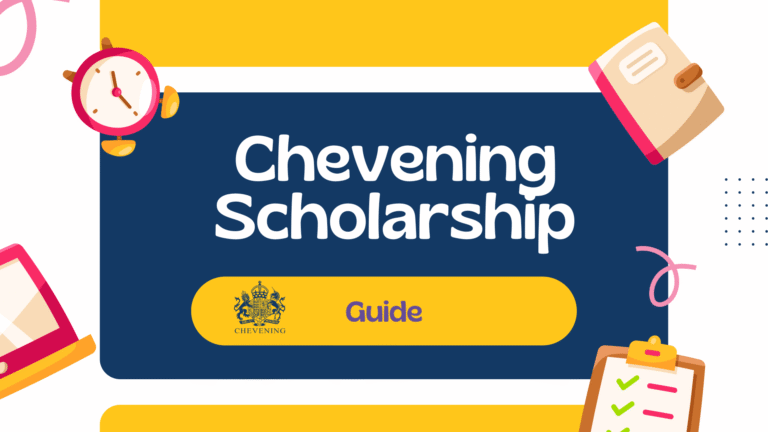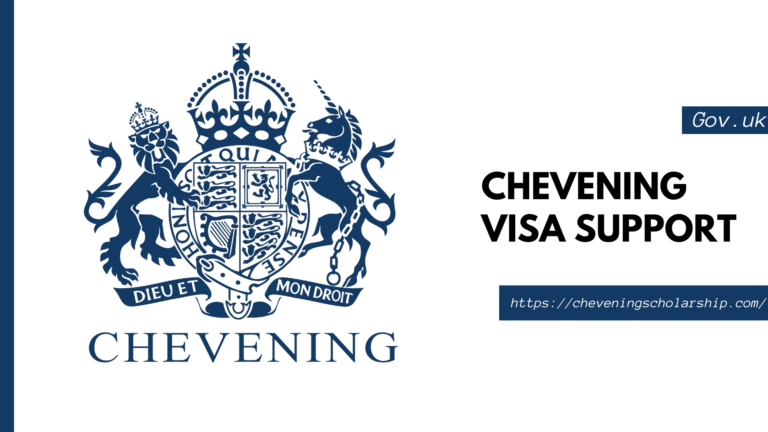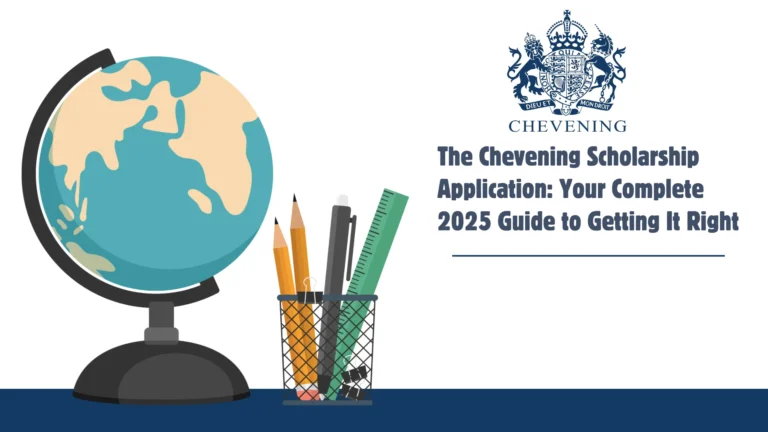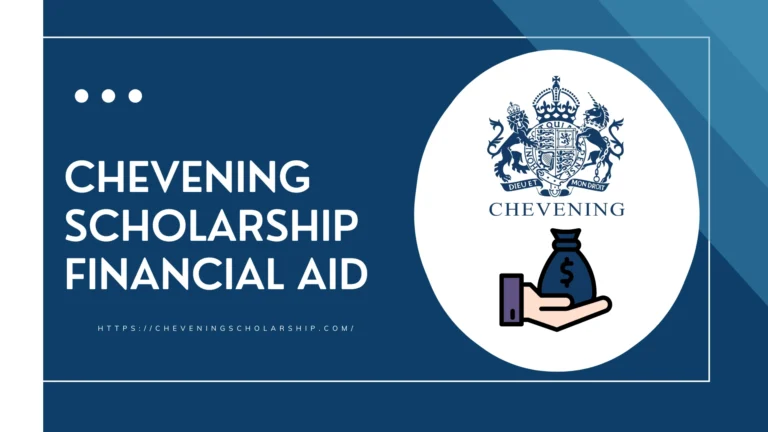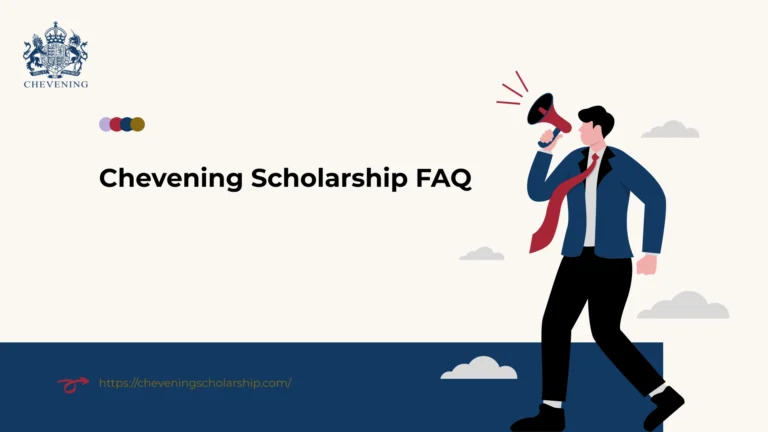Chevening Scholarship Personal Statement: The Ultimate Guide to Writing Essays That Win
Here’s the moment of truth: you’re staring at a blank screen, cursor blinking mockingly, knowing that the next 2,000 words (spread across four essays) will determine whether you spend next year at Oxford or spend next year wondering “what if?”
The Chevening scholarship personal statement isn’t one essay—it’s four distinct essays, each exactly 500 words, each testing different aspects of your candidacy, and each capable of making or breaking your application. No pressure, right?
I’ve seen brilliant candidates with impressive CVs get rejected because their essays were generic. I’ve watched dark horses with modest backgrounds win scholarships because their personal statements were magnetic. The difference? Understanding that these aren’t academic exercises or creative writing samples—they’re strategic narratives designed to prove you’re exactly what Chevening seeks.
Here’s what most applicants miss: the selection panel reads thousands of these essays. They can spot template language within seconds. They know when you’re padding word counts. They recognize recycled LinkedIn summaries masquerading as authentic stories.
But they also recognize authenticity. They notice specificity. They respond to vulnerability paired with achievement. They remember the essay that made them think “we need THIS person in our program.”
Let me show you how to write that essay.
Understanding the Chevening Scholarship Essays: What You’re Really Writing
Before we dive into Chevening personal statement tips, let’s understand what you’re actually being asked to do.
The Four-Essay Framework
Essay 1: Leadership and Influence (500 words) Prove you can mobilize people toward goals and create measurable change.
Essay 2: Networking (500 words) Demonstrate you build, maintain, and leverage professional relationships strategically.
Essay 3: Studying in the UK (500 words) Show you’ve researched deeply and have specific reasons for UK education.
Essay 4: Career Plan (500 words) Outline realistic, ambitious plans and commitment to returning home.
Chevening Personal Statement Word Limit: The Non-Negotiable
The Chevening personal statement word limit is strict: exactly 500 words per essay. Not 499. Not 501. Exactly 500.
Why This Matters:
- Form won’t accept submissions over limit
- Shows attention to detail
- Tests your ability to be concise
- Demonstrates respect for guidelines
Word Count Strategy:
- Draft at 600-700 words
- Edit ruthlessly to 500
- Every word must earn its place
- Quality over quantity

Chevening Leadership Essay: Making Your Impact Undeniable
Let’s start with the hardest one: the Chevening leadership essay example that panels remember.
Understanding What They’re Looking For
Not Looking For:
- Job titles and positions held
- Vague claims of being a “natural leader”
- Lists of responsibilities
- Academic achievements
Looking For:
- Specific instances of mobilizing others
- Measurable outcomes and impact
- Challenges overcome
- Growth and learning
- Different types of leadership
Chevening Leadership Essay Tips: The Winning Formula
Structure That Works:
Opening (50 words): Bold statement about your leadership philosophy or most significant leadership moment.
Weak: “Leadership is important to me and I have held several leadership positions.”
Strong: “When our district’s health crisis left 50,000 people without clean water, I didn’t wait for government action—I mobilized 15 villages, secured NGO partnerships, and built a sustainable solution that’s still serving communities three years later.”
Example 1: Major Leadership Achievement (180 words): Deep dive into one significant leadership experience.
The CARL Framework:
- Context: What was the situation? (30 words)
- Action: What did YOU specifically do? (80 words)
- Results: What measurable impact occurred? (50 words)
- Learning: What did you learn? (20 words)
Example Template:
“As coordinator of [organization], I faced [specific challenge affecting X people]. The situation required [what was needed], but [obstacles existed].
I took three strategic actions: First, [specific action with details]. Second, [another action with specifics]. Third, [final action]. Throughout, I [leadership quality demonstrated—eg, navigated stakeholder conflicts, empowered team members, adapted strategy].
The results: [quantified outcome 1], [quantified outcome 2], [broader impact]. More importantly, [sustainable change or system created].
This taught me [specific leadership lesson relevant to future goals].”
Example 2: Different Leadership Context (150 words): Show versatility—if Example 1 was formal authority, this should be informal influence. If Example 1 was crisis management, this should be long-term change.
Brief Third Example (50 words): Quick mention showing consistency of leadership across contexts.
Future Connection (70 words): How these experiences position you for future leadership, connecting to Chevening and career goals.
Real Leadership Essay Example Analysis
What Works:
“When floods displaced 2,000 families in my district, I organized 30 volunteers within 48 hours, coordinated with three government departments, and established emergency shelters serving 500 people. But crisis response wasn’t enough—I led community planning sessions that built flood-resistant housing and early warning systems now protecting 10 villages. The mayor appointed me to the district disaster preparedness committee, where I’ve influenced policy affecting 50,000 residents.”
Why It Works:
- Specific numbers throughout (2,000 families, 30 volunteers, 48 hours)
- Shows both immediate action and long-term systems thinking
- Demonstrates influence beyond formal authority
- Clear measurable outcomes
- Progression from direct action to policy influence
What Doesn’t Work:
“I have always been interested in leadership. In my role as team leader, I managed various projects and motivated my team members. We completed our tasks successfully and everyone was satisfied with the results. I believe I am a good leader because I care about people and work hard.”
Why It Fails:
- Generic claims anyone could make
- No specific examples or context
- No measurable outcomes
- No challenges or growth
- Could describe any leadership role anywhere

Chevening Networking Essay Tips: Beyond LinkedIn Connections
The Chevening networking essay tips everyone needs: this isn’t about how many people you know—it’s about how strategically you build relationships.
What Makes a Strong Networking Essay
Weak Networking Essays:
- List number of LinkedIn connections
- Describe attending networking events
- Generic claims about being “good with people”
- Focus only on what you gained
Strong Networking Essays:
- Specific examples of relationships creating opportunities
- Strategic approach to building networks
- Both giving and receiving value
- Long-term relationship maintenance
- Cross-sector and international connections
Chevening Essay About Networking: Winning Structure
Opening (50 words): Your networking philosophy in action.
Strong: “I don’t collect business cards—I build ecosystems. When I connected a struggling NGO with a corporate CSR program, the resulting partnership didn’t just secure $50,000 in funding; it created a model now replicated across 8 organizations, collectively impacting 10,000 beneficiaries.”
Section 1: How You Build Networks (150 words)
Describe your systematic approach:
- Where you network (conferences, online communities, professional associations)
- How you approach new connections
- What value you offer first
- How you identify strategic connections
Example: “I build networks intentionally across three spheres: my sector (education reform), adjacent sectors (technology, government), and internationally (via webinars, online communities, Twitter). At conferences, I don’t collect contacts randomly—I research attendees beforehand, identify 5-7 strategic connections, and prepare specific value I can offer them: introductions, insights from my work, or collaboration opportunities.”
Section 2: How You Maintain Networks (100 words)
Show you’re not transactional:
- Regular check-ins
- Sharing relevant resources
- Making introductions
- Supporting others’ goals
Section 3: How You Leverage Networks (150 words)
Concrete examples of networking creating impact:
- Job opportunity through connection
- Partnership formed via introduction
- Problem solved through network
- Opportunity created by connecting others
Critical: Show both what you gained AND what others gained.
Section 4: Chevening Network Vision (50 words)
How you’ll contribute to and benefit from the Chevening network specifically.
Chevening Networking Essay Examples: What Works
Strong Example:
“When Pakistan’s education ministry needed digital curriculum developers, my network made it happen. I’d met Dr. Sarah at a webinar six months earlier, mentored her graduate student, and connected her with two Pakistani educators. When this opportunity arose, she recommended me directly. I hired three Chevening alumni for the project team. This pattern—giving first, staying connected, creating mutual value—has generated 90% of my career opportunities.”
Why It Works:
- Specific story with names and context
- Shows giving value before receiving
- Demonstrates long-term relationship maintenance
- Quantifies impact (90% of opportunities)
- Includes Chevening network connection

Chevening Career Plan Essay Guide: Building Your Roadmap
The Chevening career plan essay guide boils down to one question: what will you do with this education?
What Panelists Want to See
Red Flags:
- Vague “work in development”
- Unrealistic “I’ll be President by 2030”
- Plans that suggest staying in UK
- No connection to UK learning
- Generic impact claims
Green Flags:
- Specific positions at specific organizations
- Realistic progression timeline
- Clear connection to home country challenges
- Measurable impact at each stage
- UK partnership opportunities
Career Plan Essay Structure
Opening (25 words): Your 10-year vision in one compelling sentence.
✅ Strong: “By 2035, I’ll lead Pakistan’s national climate adaptation strategy, translating UK climate policy expertise into solutions protecting 50 million vulnerable citizens.”
Years 0-2: Immediate Return Plans (125 words)
What to Include:
- Specific position/organization
- Why this role
- What impact you’ll create
- How UK education directly applies
Template: “Upon returning to [country], I’ll join [specific organization] as [specific position]. This role manages [specific responsibility], directly applying my UK learning in [subject] from [university]. Specifically, I’ll implement [concrete project], addressing [specific challenge] affecting [number] people.
This position is realistic because: [connection/qualification you have]. I’ve already [preliminary conversations/relationships] with [organization/people]. The timing aligns with [relevant context—government initiative, funding cycle, etc.].”
Years 3-5: Mid-Term Progression (150 words)
Show realistic advancement:
- Next position or expanded role
- Broader impact scope
- Leadership responsibilities
- Systems/policy level work
Years 6-10: Long-Term Vision (125 words)
Be ambitious but believable:
- Senior leadership or policy influence
- National/regional impact
- Mentorship of next generation
- Chevening network utilization
UK-Home Country Connection (50 words)
How you’ll facilitate UK partnerships and bilateral priorities.
Return Commitment (25 words)
Brief, genuine statement of why you’re committed to returning home.
Career Plan Essay Tips: Making It Believable
Do:
- Name specific organizations
- Reference actual initiatives or policies
- Show you’ve researched opportunities
- Connect to your current trajectory
- Demonstrate sector knowledge
Don’t:
- Jump unrealistically (junior analyst to cabinet minister)
- Ignore practical considerations
- Make it all about you (include impact)
- Hint at UK permanent residency
- Use vague “somewhere in…”

Studying in UK Essay: Proving You’ve Done Your Homework
This is where Chevening scholarship essay questions test your research depth.
Beyond “UK Has Good Universities”
What Doesn’t Work:
- Generic praise of UK education
- Rankings-based justifications
- Random course selections
- No specific university knowledge
What Works:
- Named professors and their research
- Specific modules addressing specific challenges
- UK-specific advantages over other countries
- Clear connection to career goals
Structure for UK Study Essay
Opening (50 words): Your overarching goal and why UK specifically.
Why UK vs. Alternatives (100 words): Explain specifically why UK over USA, Europe, Australia, etc.
Possible UK Advantages:
- Specific research excellence (UK leads in X)
- 1-year intensive master’s programs
- Proximity to Europe for field research
- Historical expertise in your sector
- Specific partnerships between UK and your country
Course 1 Deep Dive (125 words):
Must Include:
- Exact course name and university
- Specific modules and why they matter
- Named professor(s) and their relevant work
- How it addresses specific challenge in your country
- What you’ll produce (dissertation topic)
Example: “The MSc in Climate Change and Development at University of Edinburgh directly addresses Pakistan’s climate vulnerability. Professor James Smith’s research on monsoon adaptation strategies parallels challenges in Sindh province, where I’ve worked. The module ‘Climate Finance and Policy’ teaches frameworks I’ll apply when advising Pakistan’s Climate Change Authority. For my dissertation, I’ll study ‘Community-Based Flood Early Warning Systems,’ building on my current work and creating a model scalable across South Asia.”
Courses 2 & 3 (75 words each): Shorter but still specific. Show how all three choices tell coherent story.
Connection to Past Experience (50 words): How your background prepared you for these courses.
Future Application (25 words): What you’ll do with this specific knowledge.

Chevening Personal Statement Format: Technical Requirements
Let’s talk about Chevening personal statement format details that matter.
Formatting Rules
What’s Allowed:
- Plain text
- Paragraph breaks
- Clear structure
What’s NOT Allowed:
- Bold or italics (doesn’t transfer)
- Bullet points
- Headers within essay
- Special characters
- Multiple fonts
Chevening Scholarship Essay Format Best Practices:
Paragraph Strategy:
- 5-7 paragraphs per essay
- Each paragraph: 70-100 words
- Clear topic sentences
- Smooth transitions
The Readability Test: Read aloud. If you stumble or lose the thread, rewrite.
Chevening Personal Statement Marking Criteria
What evaluators actually assess:
| Criterion | Weight | What They Look For |
|---|---|---|
| Relevance | 25% | Direct response to question |
| Specificity | 25% | Concrete examples with details |
| Impact | 20% | Measurable outcomes demonstrated |
| Authenticity | 15% | Genuine voice, not template |
| Writing Quality | 10% | Clear, error-free, compelling |
| Future Potential | 5% | Connection to goals |
Chevening Personal Statement Mistakes: What Kills Applications
Let’s address Chevening personal statement mistakes that sink thousands of applications.
Fatal Errors
Mistake #1: Generic Template Language
“I am a dedicated professional passionate about making a difference in my community through innovative solutions and collaborative approaches.”
“I’ve trained 200 teachers across 30 schools, increasing student engagement by 45% through tablet-based learning I designed specifically for low-connectivity areas.”
Mistake #2: Telling Instead of Showing
“I am a strong leader with excellent networking skills.”
[Entire essay shows leadership through specific stories]
Mistake #3: Underselling Your Impact
Don’t be modest. Quantify everything.
Mistake #4: Copy-Pasting LinkedIn/CV
Essays aren’t career summaries. They’re strategic narratives.
Mistake #5: Ignoring Word Limits
Going over: Application won’t submit Going under by 50+: Looks unfinished
Mistake #6: Poor Proofreading
Typos suggest carelessness. Grammar errors raise English proficiency concerns.
Mistake #7: Weak Connections Between Essays
Your four essays should tell one coherent story, not four disconnected ones.
Chevening Scholarship Essay Tips: The Writing Process
Chevening scholarship essay tips from winners:
Phase 1: Research and Brainstorming (Week 1)
For Leadership Essay:
- List 10-15 leadership experiences
- For each, note: context, actions, quantified results, learning
- Choose top 3 with different leadership types
For Networking Essay:
- Map your network (sectors, connections, opportunities)
- Identify 3-5 stories showing networking creating impact
- Note how you maintain relationships
For UK Essay:
- Research 10-15 potential courses
- Identify 3-5 professors per course
- Read their recent papers
- Note specific modules
For Career Essay:
- Research organizations you’d join
- Map realistic career progression
- Identify measurable impact at each stage
- Note UK partnership opportunities
Phase 2: First Draft (Week 2)
Draft Rules:
- Write without word limit first
- Get ideas down
- Don’t self-edit while drafting
- Aim for 700-800 words per essay
Phase 3: Strategic Cutting (Week 3)
From 700 to 500 words:
- Remove redundancy
- Cut adjectives and adverbs
- Tighten sentences
- Eliminate fluff
Every sentence must:
- Add new information
- Support your case
- Earn its space
Phase 4: Feedback Round 1 (Week 4)
Who to Ask:
- Chevening alumni
- Mentors who know your work
- Professional writers/editors
- Peer applicants (exchange reviews)
Questions for Reviewers:
- Is my impact clear and specific?
- Do I sound authentic or templated?
- What’s memorable about my essays?
- What’s confusing or vague?
Phase 5: Revision (Week 5)
Based on feedback:
- Add more specificity where vague
- Quantify where qualitative
- Clarify confusing sections
- Strengthen weak examples
Phase 6: Feedback Round 2 (Week 6)
New reviewers if possible. Fresh eyes catch new issues.
Phase 7: Final Polish (Week 7)
The Final Checklist:
- [ ] Exactly 500 words each
- [ ] Zero typos or grammar errors
- [ ] Specific examples throughout
- [ ] Quantified impact in every essay
- [ ] Authentic voice
- [ ] Coherent story across four essays
- [ ] Clear connection to goals
- [ ] Reads smoothly aloud
Phase 8: Application Form Entry (Week 8)
Critical Steps:
- Copy from final document
- Paste into application form
- Check formatting survived
- Verify word count in form
- Save frequently
- Have someone proofread in form

Chevening Personal Statement Examples: Learning from Winners
Let’s analyze Chevening personal statement examples that worked.
Leadership Essay Extract: What Won
“When our school’s dropout rate hit 40%—losing 200 girls annually to early marriage—I didn’t accept it as inevitable. I organized 15 teachers into working groups, we designed culturally sensitive parent engagement workshops, and I negotiated with 30 village elders for community support. Within 18 months, dropout rates fell to 12%. But the real impact? We created a replicable model now implemented across 50 schools district-wide, keeping 2,000 girls in education.”
Why This Works:
- Specific problem with numbers (40% dropout, 200 girls)
- Clear actions taken (organized, designed, negotiated)
- Measurable results (40% to 12%)
- Scalable impact (50 schools, 2,000 girls)
- Shows both direct action and systems change
Networking Essay Extract: What Won
“I don’t wait for opportunities—I architect them. When Pakistan’s tech sector needed policy reform, I connected three people who’d never met: a parliamentary staffer I’d mentored, a silicon valley executive from my online community, and a local entrepreneur from my university alumni network. Their collaboration produced policy recommendations adopted by the Ministry of IT. This pattern—identifying gaps, connecting stakeholders, facilitating solutions—has generated $2M in funding for projects I’ve led or advised.”
Why This Works:
- Active role in creating value
- Specific story with context
- Shows strategic thinking
- Quantifies broader impact
- Demonstrates give-first mentality
Chevening Personal Statement Advice: Insider Wisdom
Final Chevening personal statement advice from selection panels and alumni:
What Winners Say
“Be Boringly Specific” “My first application was full of inspiring language but vague on details. Rejected. Second application: boring precision about numbers, names, dates, places. Selected.” — Ahmed, Pakistan
“Show Your Flaws” “My leadership essay included a failure—a program that flopped spectacularly. I explained what I learned and how I applied that learning to my next successful initiative. Panel loved the authenticity.” — Maria, Colombia
“Connect the Dots” “My four essays told one story from four angles. Leadership: how I mobilize communities. Networking: how I built coalitions. UK: why British urban planning expertise. Career: how I’ll redesign Pakistani cities. One vision, four facets.” — Priya, India
“Edit Until You Hate It” “I revised my essays 11 times. By the end, I was sick of reading them. But that’s when they became tight, powerful, and impossible to ignore.” — Emmanuel, Ghana
What Selection Panels Say
“We Remember Specific Numbers” Generic claims blur together. “Improved outcomes” means nothing. “Increased vaccination rates from 52% to 81% across 15 districts” sticks in memory.
“Authenticity Beats Polish” We can spot over-edited, consultant-written essays. Sometimes rough-around-edges authentic voice wins over technically perfect but soulless writing.
“Show Us You Did Your Homework” When candidates name specific professors and modules, we know they’re serious. When they write generic praise of “excellent UK universities,” we know they didn’t research.
Your Personal Statement Action Plan
Ready to write? Here’s your roadmap:
Weeks 1-2: Research Phase
- [ ] List 15+ leadership experiences
- [ ] Map your professional network
- [ ] Research 15+ UK courses thoroughly
- [ ] Draft career timeline with specifics
Weeks 3-4: First Drafts
- [ ] Write all four essays at 700-800 words
- [ ] Don’t self-edit while drafting
- [ ] Get ideas down raw
- [ ] Focus on content, not length
Weeks 5-6: Cutting and Refining
- [ ] Cut to 500 words each
- [ ] Add quantification everywhere
- [ ] Replace vague with specific
- [ ] Tighten every sentence
Weeks 7-8: Feedback and Revision
- [ ] Get 3-5 people to review
- [ ] Incorporate feedback
- [ ] Second round of feedback
- [ ] Final polish
Week 9: Form Entry
- [ ] Paste into application form
- [ ] Verify formatting
- [ ] Check word counts
- [ ] Proofread in form
- [ ] Save frequently
The Bottom Line on Personal Statements
Your Chevening scholarship personal statement isn’t about perfect prose or impressive vocabulary. It’s about proving—through specific, quantified examples—that you’re exactly what Chevening seeks: a future leader with demonstrated impact, strategic networks, clear vision, and commitment to creating change at home.
The difference between acceptance and rejection often comes down to specificity. Not “I helped communities” but “I trained 500 people, reaching 10,000 beneficiaries, with 65% sustained behavior change six months later.”
Start writing. Be specific. Quantify everything. Revise ruthlessly. And remember: they’re not looking for perfection. They’re looking for potential.
Your story is unique. Now go write it in a way that makes them unable to say no.
Need feedback on your essays? Connect with Chevening alumni on LinkedIn or attend official Chevening webinars for guidance. The community wants you to succeed.
Start your drafts early. The best essays are written over weeks, not days.
Disclaimer: Essay examples are composites based on successful applications, modified to protect scholar privacy. Always write your own authentic experiences—never copy examples verbatim.
